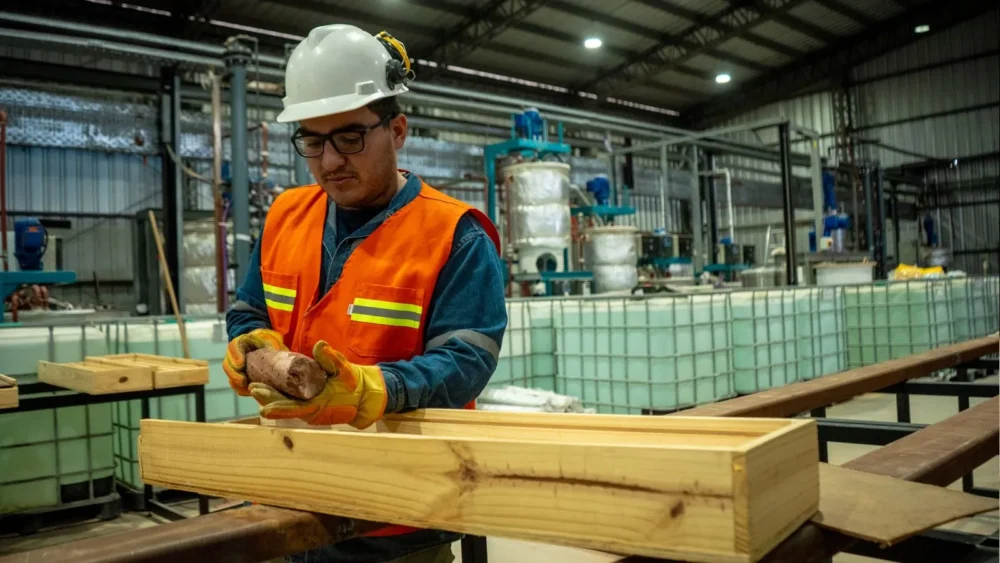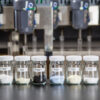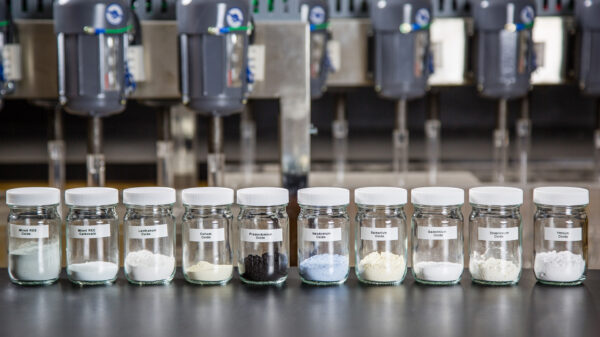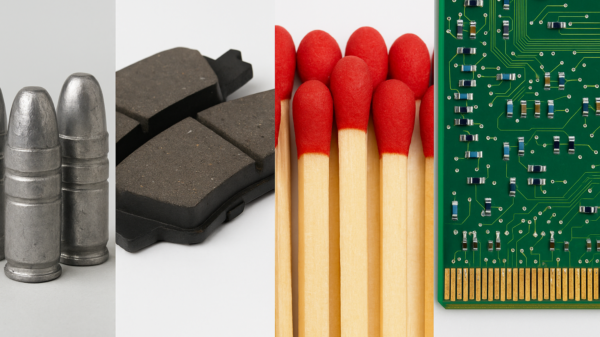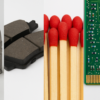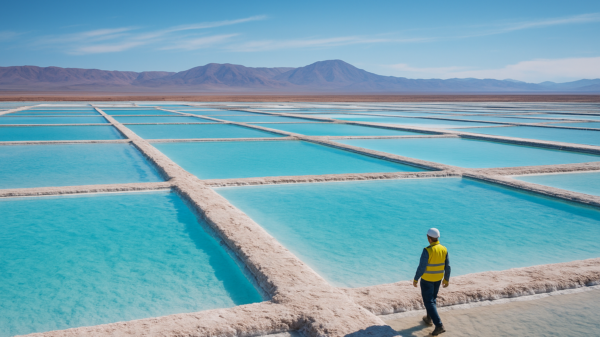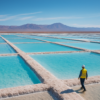Lithium Argentina Corp. (TSE: LAR) (NYSE: LAR) has taken a decisive step to reshape its footprint in Argentina’s lithium industry.
The company signed a framework agreement with Ganfeng Lithium Group to create a new joint venture on Tuesday. This will combine three contiguous lithium brine projects in Salta Province.
The new entity will merge Ganfeng’s wholly owned Pozuelos-Pastos Grandes project with Lithium Argentina’s Pastos Grandes project, which it owns 85 per cent of, and its 65 per cent interest in the Sal de la Puna project. Together, the assets will form what the companies call “PPG.”
Upon closing, Ganfeng will hold 67 per cent of the venture, with Lithium Argentina retaining 33 per cent. Ownership will be based on a mix of resources, capital contributions, and technology inputs. The move consolidates three large-scale assets into one unified development platform, designed to fast-track growth in one of the world’s most promising lithium regions.
The new JV aims to develop a global-scale operation with a targeted capacity of up to 150,000 tonnes per annum of lithium carbonate equivalent. The plan calls for three 50,000-tonne phases. In addition, the operation will use a hybrid of direct lithium extraction and solar evaporation, which is expected to enhance scalability and efficiency.
Lithium Argentinas President and CEO Sam Pigott said the arrangement builds on their proven relationship with Ganfeng at Cauchari-Olaroz, Argentina’s largest lithium operation.
“The New JV will provide access to advanced technologies, increased financial flexibility and meaningful operating synergies,” said Pigott.
He emphasized that combining forces in the Pozuelos basin increases the company’s ownership stake in a key resource while aligning interests for a larger-scale operation.
Read more: Ganfeng takes 15% stake in Lithium Argentina’s Pastos Grandes project
Read more: Lithium Argentina appoints new leader to navigate challenging industry climate
Ganfeng acquired Pozuelos-Pastos Grandes in 2022
Pigott said the deal marks an important milestone in the company’s strategy to develop a diversified, scalable, and sustainable global lithium supply chain.
Since acquiring the Pastos Grandes project in 2022 through its purchase of Millennial Lithium, Lithium Argentina has advanced development on several fronts. The company completed environmental baseline studies, updated resource estimates, built a pilot evaporation pond system, and developed a hydrogeological model. In 2023, it added a 65 per cent interest in Sal de la Puna through its acquisition of Arena Minerals. Additionally, the company has been working to integrate these assets into its broader development plans.
Ganfeng entered the picture in 2022 when it acquired the Pozuelos-Pastos Grandes (PPG) project from Pluspetrol Resources for USD$1 billion. Since then, Ganfeng has invested another $200 million into infrastructure, a production wellfield, and a 2,000-person construction camp. Together, the two companies have already committed approximately USD$1.8 billion in acquisition and development costs for the combined PPG assets.
The feasibility study now underway is central to the project’s future. It will assess production of both lithium carbonate and lithium chloride, providing flexibility for battery market demand. The study will also evaluate the hybrid processing approach, blending direct lithium extraction with solar evaporation. The results are expected by the end of 2025 and will be incorporated into an application under Argentina’s Incentive Regime for Large Investments. The companies plan to submit the application in the first half of 2026.
In addition to technology, financing will play a major role in bringing PPG to full production. Both partners are pursuing strategic collaborations, including potential offtake agreements, minority equity interests, and project financing.
Read more: China reveals lithium battery tech that spots deadly failures before battery activation
Read more: ExxonMobil and LG Chem agree to lithium offtake agreement
Debt secured by equity interest in PPG
These efforts aim to secure capital for all three phases of development. Furthermore, the structure will leverage the operational teams and local expertise the companies have built through their previous partnerships.
To strengthen Lithium Argentina’s financial position, Ganfeng has agreed to provide a six-year, USD$130 million debt facility. The loan will bear interest at SOFR plus 2.5 per cent and can be prepaid without penalties. Lithium Argentina plans to use the facility to refinance corporate debt and bolster its balance sheet. As part of the arrangement, up to 50 per cent of the company’s offtake from PPG’s initial development phase will go to Ganfeng at market prices.
The debt will be secured by Lithium Argentina’s equity interest in PPG. This security can be released or subordinated to future corporate debt financings. Finalization of the loan depends on closing the joint venture and receiving all customary approvals. However, the company views the facility as a significant de-risking measure for its capital structure.
The framework agreement outlines several steps before the new JV becomes official. These include signing definitive agreements such as a shareholder agreement, operating agreement, offtake agreement, and technology licence agreement. The parties must also complete a detailed development plan and the definitive loan agreement. Regulatory and stock exchange approvals are required as well. The companies expect the joint venture to close by the first quarter of 2026.
The combined project offers multiple advantages. By uniting three contiguous properties, the new JV can optimize resource development, infrastructure, and workforce deployment. Additionally, the scale of the operation enhances negotiating power with potential customers and partners.
Read more: Codelco and SQM get regulatory approval for lithium joint venture in Chile
Read more: Environment nonprofits go after Hell’s Kitchen Lithium Project in Salton Sea
Staged approach allows adjustments based on market conditions
Argentina’s lithium industry has been attracting attention from global players due to its high-quality brine resources and supportive investment climate. The Salta region, in particular, has become a hub for international investment. Accordingly, the PPG venture positions both companies to capitalise on rising demand for lithium as electric vehicle adoption accelerates.
The phased development strategy also offers flexibility. By starting with a 50,000-tonne phase, the venture can generate early revenues to support later expansion. This staged approach allows for adjustments based on market conditions, technology performance, and financing availability. Additionally, it reduces the risk of overcommitting capital in a volatile commodities market.
The companies have already tested the partnership model at Cauchari-Olaroz. That project reached production as Argentina’s largest lithium operation, demonstrating the companies’ ability to deliver complex projects in challenging environments. Furthermore, both partners bring complementary strengths—Ganfeng with its global processing and technology expertise, and Lithium Argentina with its local project development experience.
Industry analysts see the PPG consolidation as part of a broader trend in the lithium sector. Larger, integrated projects can offer better economies of scale, stronger supply chain control, and greater appeal to major automakers seeking secure, long-term supply. Additionally, hybrid extraction technologies are becoming more attractive as companies seek to balance environmental considerations with production efficiency.
However, challenges remain. The feasibility study’s results will be critical to investor confidence. The partners must also manage construction costs, regulatory processes, and evolving market dynamics. Furthermore, competition from other lithium regions, such as Chile and Australia, could influence pricing and investment flows.
.

